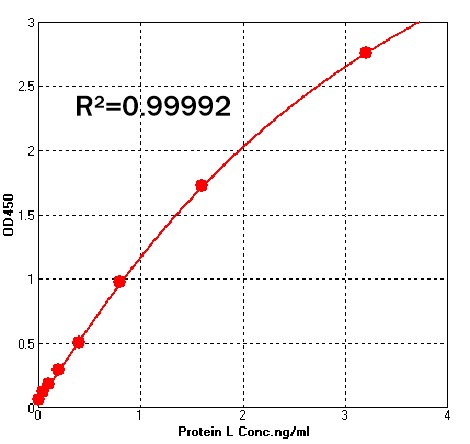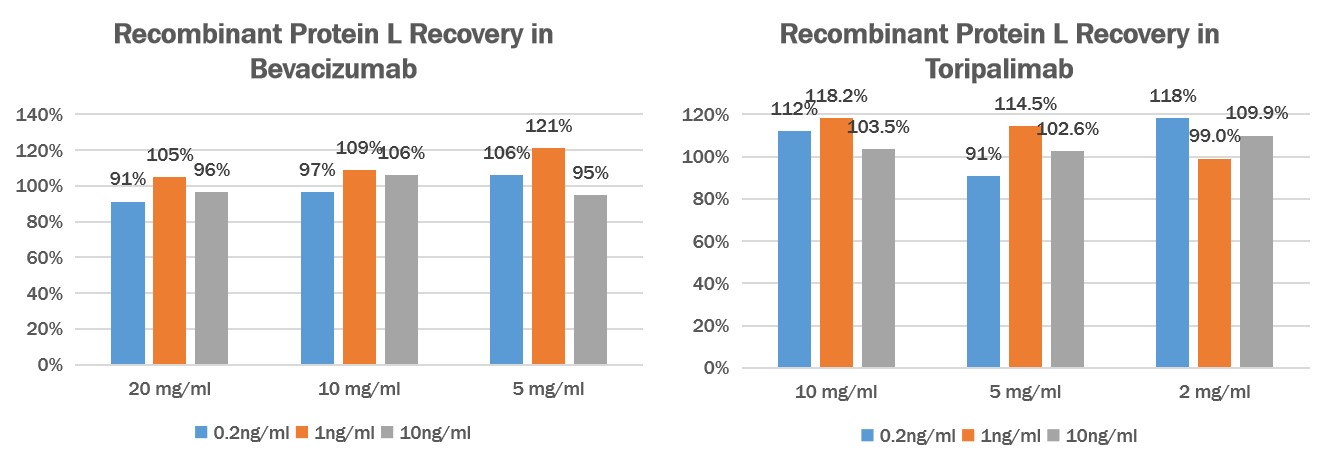 Limited Edition Golden Llama is here! Check out how you can get one.
Limited Edition Golden Llama is here! Check out how you can get one.  Limited Edition Golden Llama is here! Check out how you can get one.
Limited Edition Golden Llama is here! Check out how you can get one.
 Offering SPR-BLI Services - Proteins provided for free!
Offering SPR-BLI Services - Proteins provided for free!  Offering SPR-BLI Services - Proteins provided for free!
Offering SPR-BLI Services - Proteins provided for free!
 Thank you for choosing ACROBiosystems. Would you rate our product and service?
Thank you for choosing ACROBiosystems. Would you rate our product and service?  Thank you for choosing ACROBiosystems. Would you rate our product and service?
Thank you for choosing ACROBiosystems. Would you rate our product and service?
 Here come GMP Grade Cytokines!Free Sample is available!
Here come GMP Grade Cytokines!Free Sample is available!  Here come GMP Grade Cytokines!Free Sample is available!
Here come GMP Grade Cytokines!Free Sample is available!
| Assay Type | Sandwich-ELISA |
| Analyte | Protein L |
| Format | 96T |
| Regulatory Status | RUO |
| Sensitivity | <50pg/mL |
| Standard Curve Range | 50 pg/mL-3200 pg/mL |
| Assay Time | 2 hr |
| Suitable Sample Type | For the quantitative determination of recombinant protein L |
| Sample volume | 50uL |
The kit is developed for the detection of natural or structurally conserved recombinant forms of Protein L and a recombinant form of Protein L with very significant structural differences from natural Protein A such as MabSelectTM VL in Bioprocess manufacturing applications. It is used as a tool to aid in optimal purification process development and in routine quality control of in-process streams as well as final product .
It is for research use only.
The opened kit should be stored per components table. The shelf life is 30 days from the date of opening.
| ID | Components | Size |
| RES026-C01 | Pre-Coated Anti-Protein L Antibody Microplate | 1plate |
| RES026-C02 | Recombinant Protein L Standard (1μg/mL) | 100μL |
| RES026-C03 | Biotin-Anti-Protein L Antibody | 150uL |
| RES026-C04 | Streptavidin-HRP | 10μg |
| RES026-C05 | 10×Sample Dilution Buffer | 15mL |
| RES026-C06 | Denaturation Buffer | 15mL |
| RES026-C07 | 20×Washing Buffer | 30mL |
| RES026-C08 | Antibody Dilution Buffer | 15mL |
| RES026-C09 | Streptavidin-HRP Dilution Buffer | 15mL |
| RES026-C10 | Substrate Solution | 12mL |
| RES026-C11 | Stop Solution | 8mL |

Detection of Recombinant Protein L by sandwich-ELISA Assay. Immobilized Anti- Protein L Antibody can bind Recombinant Protein L . Detection was performed using Biotin-Anti- Protein L Antibody with sensitivity of 50 pg/mL. For each experiment, a standard curve needs to be set for each micro-plate, and the specific OD value may vary depending on different laboratories, testers, or equipments. The following example data is for reference only.
Three samples of known concentration were tested ten times on one plate to assess intra-assay precision.

Three samples of known concentration were tested in three separate assays to assess inter-assay precision.

Add different concentrations of Protein L (0.2ng/mL、1ng/mL、10ng/mL) to different concentrations of Human IgG1 (Bevacizumab) (20mg/mL、10mg/mL、5mg/mL) or Human IgG4 (Toripalimab) (10mg/mL、5mg/mL、2mg/mL), then dilute the antibodies to a reasonable range, then test and calculated the concentration of protein L to give the recovery rate.

We have conducted interference effect test about frequently-used buffers, they have excellent buffer compatibility. For specific buffers, it is recommended that you verify recovery to determine the minimum dilution ratio.

Host cell protein (HCP 500 ng/mL) and host cell DNA (HCD 0.5 ng/mL) of HEK293, E.coli or CHO systems were added to human IgG1 (Bevacizumab, 1mg/mL) and human IgG4 (Toripalimab, 1mg/mL), respectively, which were higher than the usual quality standard limit. Then high, medium, and low concentrations of Protein L were added, respectively, and the ratio of Protein L recovery in the Protein L added samples without HCP and HCD was added as the specificity verification index. verification index.


ACROBiosystemsは、二重特異性抗体の治療薬への臨床開発を加速するために、高い生物活性を持つ均一なCD3δ/CD3εおよびCD3γ/CD3εタンパク質のシリーズを開発しました。

We offer a wide range of cell and gene therapy solutions starting from discovery to the clinic. Explore our wide range of proteins, antibodies, kits, and other assays to accelerate the development of your cell and gene therapy.

Organoid Toolbox は、即使用可能のオルガノイド、オルガノイド分化ツールキット、創薬プロジェクトの進行を加速する、さまざまなサービスを含むオルガノイドソリューションのことです。

IL-15、IL-7、IL-21など、高品質のGMP準拠サイトカイン製品を提供しており、免疫細胞治療薬の臨床研究をサポートし、医薬品規制当局の承認を加速できます。

注目されている50以上のCAR-Tターゲットがあり、CARの発現の検出のために設計された抗原タンパク質をフローサイトメトリーで検証し、CARの発現が高い特異性で検出できます。ロット間の一貫性が保証されています。また、PE / FITC標識タンパク質を利用することで、ワンステップ染色でCARの発現を高い特異性でバックグラウンドなしに検出できます。

CD20、Claudin18.2、CD133、GPRC5D、CCR5、CCR8などの安定で高活性な全長型膜貫通タンパク質は、免疫学、ELISA、SPR、BLI、細胞実験、CAR陽性率検出に利用できます。VLP、界面活性剤、ナノディスクなどのテクニカルプラットフォームによって複数回膜貫通タンパク質の医薬品創薬を促進できます。

GMP準拠サイトカイン、高品質の細胞活性化/増幅試薬、遺伝子改変試薬/酵素、CAR検出試薬などの製品を提供し、細胞、遺伝子治療用に全体的なソリューションを提供し、創薬から臨床研究までのすべての段階をサポートします。

これまでに知られている免疫チェックポイント分子をほぼ製品化しており、様々なタグの製品群を提供できます。天然高分子の構造はMALSによって、生物活性はELISA/SPR/BLI/FACSなどによって検証済みです。またBiotin/FITCなどの標識も選択でき、抗体のハイスループットスクリーニングに利用できます。

弊社ACROBiosystemsはADC医薬品の開発のサポートに取り組み、注目されている様々なターゲットのために、異なる種類とタグの製品が開発され、高い純度と親和性が特長です。免疫、抗体スクリーン、SPR、細胞活性検査などの実験に利用できます。Protocolも無償で提供いたします。

すべての分子のFc受容体タンパク質だけでなく、一般的な変異体やビオチン標識タイプも含まれております。お客様のモノクローナル抗体の開発をサポートします。

インターロイキン、成長因子、ケモカイン、TNF など、様々なサイトカインターゲットの自然なコンフォメーションを確保するために HEK293 によって発現されます。SDS-PAGE/HPLC/SEC-MALS によって高純度は確認され、高い生物活性は ELISA/SPR/BLI によって確認されています。

AneuroはACROBiosystemsが神経科学研究のために設計した製品群のブランドです。神経科学研究を推進するための治療・診断用研究タンパク質、PFF、組み換え神経因子など、高品質の重要なタンパク質を提供しております。
This web search service is supported by Google Inc.